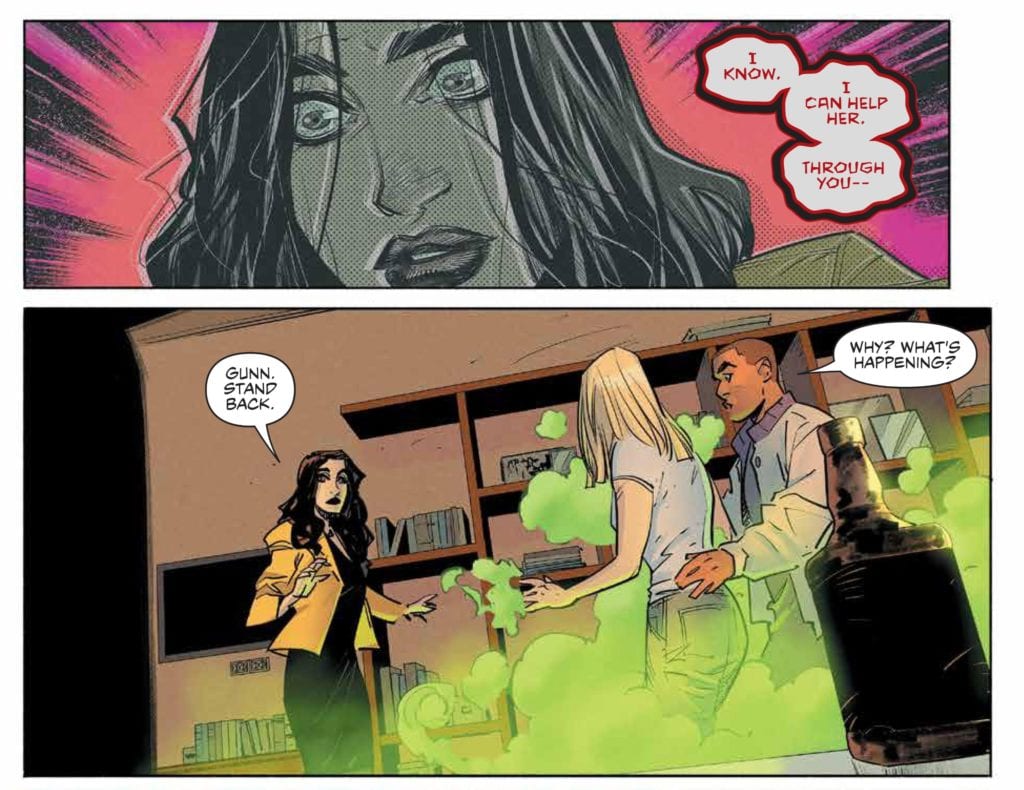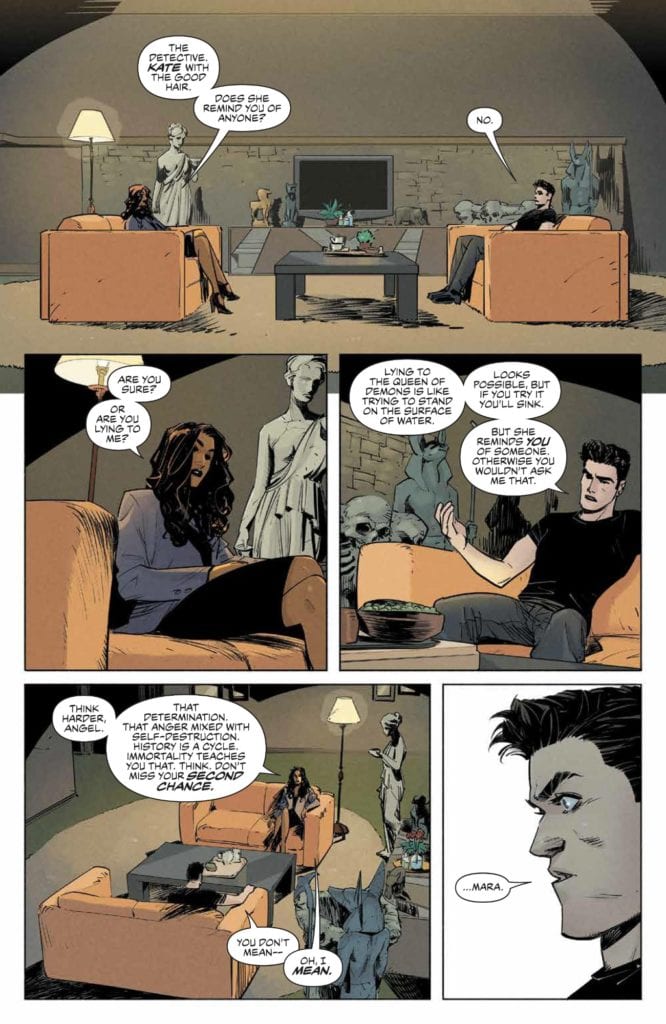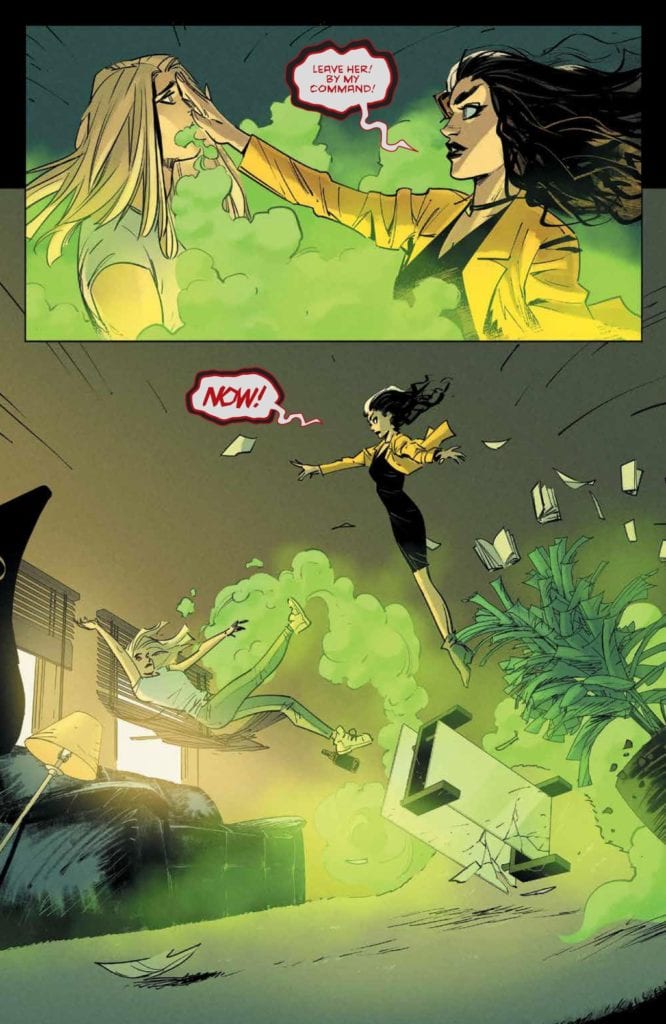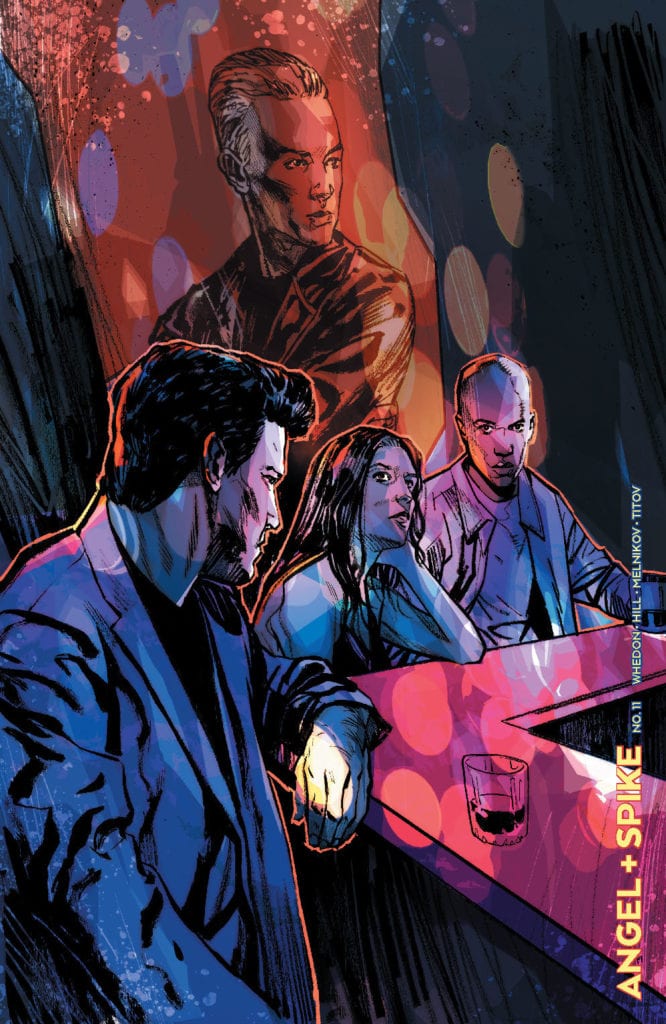With the Hellmouth crossover still affecting the story-lines, this weeks Angel + Spike #11 has to deal with the fallout as well as new horrors. Continuing the re-imaging from BOOM! Studios, this series has proven to be a hit with fans and new readers alike. Seemingly unfazed by the character’s legacy, the creative team have made Angel their own and continue to push the boundaries of expectation and creativity.

Tales To Tell
There’s a killer demon on the loose in Los Angeles but then again, when isn’t there?
While Angel broods, forced to face part of his past by Lilth, the rest of the gang get to work saving the day. Unfortunately for Fred, saving the day will come at a cost and she will be forced to face her own demons. And on the edges, creeping ever closer, are the infamous law firm Wolfram and Hart.
Despite the title, this issue is all about Angel and Fred. Bryan Edward Hill has crafted a story comparing the two characters and their individual plights. Hill puts his cast members into situations indicative of their personalities and then allows the narrative to draw out their fears. Both Angel and Fred have to face an aspect of themselves and their reactions tell the reader everything they need to know about the characters.
Angel broods. Hill literally allows the vampire to sit out of the action and has him engage in a number of conversations. Slowly the therapy-like sessions reveal a little of Angel’s past and Hill is able to play with new ground, expanding on the character’s history which he has hinted at in previous issues.
In turn Fred is facing a dilemma that is very much in the present. She has trust issues and this means she doesn’t know where to turn. Afraid of what her new team mates might think of her she desperately leans on the only other person who appears to be able to help: Lilah. To contrast Angel’s journey, Hill shows the reader exactly how powerful Fred is becoming and the temptations she faces. Fred is the action star in this issue.

Running or Sitting
Gleb Melnikov fills this issue of Angel with energy. Whether it is the magical energy emanating from Fred or the personality confrontations between Angel and couch partners, there is a constant electric air on the pages. You can almost feel it crackling from the panels. Melnikov is quick to set the scene in the first panel and then use each following image to tease the cast’s characteristics to the foreground. When he does pull the point of view back it is always for a heart stopping, powerful moment in the narrative.
The pacing is pitch perfect for the story Hill is telling. It is not overrun with action and doesn’t skip through the contemplative moments. Melnikov gives each scene the space it requires to breathe, allowing the narrative to grow slowly and the impact of each revelation to sink in.
His line work is sharp and to the point which gives the comic an eerie, uncomfortable feel. The companion comic, Buffy, has a lighter tone and in comparison is definitely aimed towards a younger audience. Angel is more adult in nature. Not because it is gorier or more explicit in nature, but the themes it deals with, such as the corruption of innocence, is less black and white. It’s not as straightforward as good versus evil. Fred’s move towards Lilah is almost understandable in the circumstances and so is Angel’s reluctance to get involved with Kate.

Letters and Tones
Ed Dukeshire has created some exquisite speech balloons for this issue of Angel. When Fred’s inner demon comes out, her tone and personality dramatically change all because of the thick, harsh borders Dukeshire uses. The change in text color also helps to stamp the character voice onto the scene. You can hear the disturbing tones rattling around your brain as you read these pages.
Dukeshire uses more subtle changes in the text and speech balloons in other sections of the comic, but these are equally as effective for creating individual voices for the cast members. These shifts in tone and mood are assisted by the color work of Roman Titov. Quiet moments of introspection are softly colored with mundane shades and plenty of shadow. This all changes when the scenes shift into supernatural realms where Titov brings out the horror with unsettling color choices.

Conclusion
Angle + Spike has a growing cast but Hill manages to keep focus on the story and not become sidetracked with obsessive fan service. This issue is packed with character development and the world Hill is building is both familiar and brand new. Overall it feels like part of one of the best episodes of the television series.
The artwork is superbly fitting for Hill’s take on the Vampire with a Soul and with every issue the entire creative team push the bar a little bit higher. This run of Angel has become a must read for fans of the franchise and beyond.

